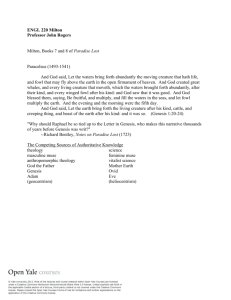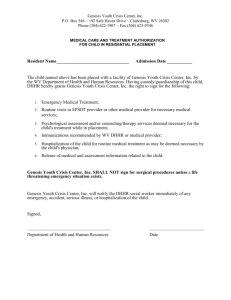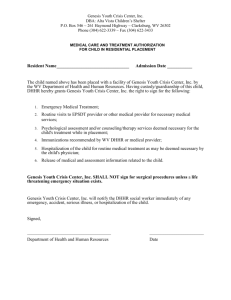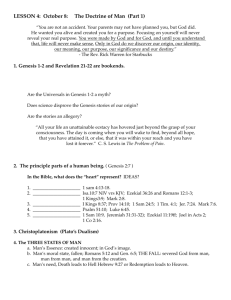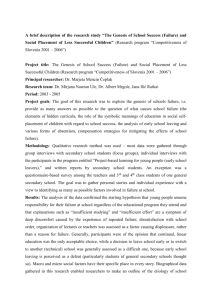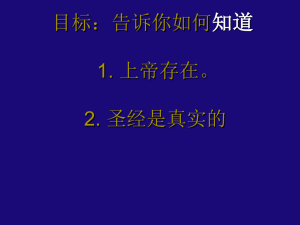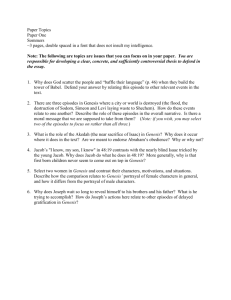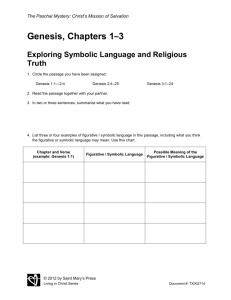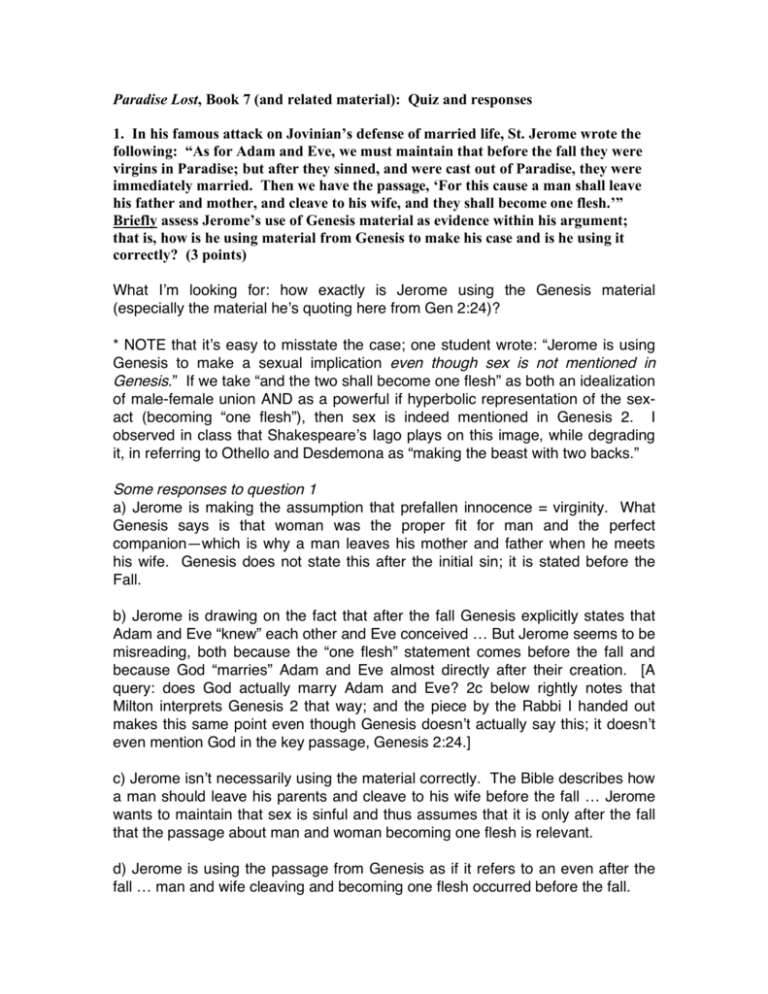
Paradise Lost, Book 7 (and related material): Quiz and responses
1. In his famous attack on Jovinian’s defense of married life, St. Jerome wrote the
following: “As for Adam and Eve, we must maintain that before the fall they were
virgins in Paradise; but after they sinned, and were cast out of Paradise, they were
immediately married. Then we have the passage, ‘For this cause a man shall leave
his father and mother, and cleave to his wife, and they shall become one flesh.’”
Briefly assess Jerome’s use of Genesis material as evidence within his argument;
that is, how is he using material from Genesis to make his case and is he using it
correctly? (3 points)
What I’m looking for: how exactly is Jerome using the Genesis material
(especially the material he’s quoting here from Gen 2:24)?
* NOTE that it’s easy to misstate the case; one student wrote: “Jerome is using
Genesis to make a sexual implication even though sex is not mentioned in
Genesis.” If we take “and the two shall become one flesh” as both an idealization
of male-female union AND as a powerful if hyperbolic representation of the sexact (becoming “one flesh”), then sex is indeed mentioned in Genesis 2. I
observed in class that Shakespeare’s Iago plays on this image, while degrading
it, in referring to Othello and Desdemona as “making the beast with two backs.”
Some responses to question 1
a) Jerome is making the assumption that prefallen innocence = virginity. What
Genesis says is that woman was the proper fit for man and the perfect
companion—which is why a man leaves his mother and father when he meets
his wife. Genesis does not state this after the initial sin; it is stated before the
Fall.
b) Jerome is drawing on the fact that after the fall Genesis explicitly states that
Adam and Eve “knew” each other and Eve conceived … But Jerome seems to be
misreading, both because the “one flesh” statement comes before the fall and
because God “marries” Adam and Eve almost directly after their creation. [A
query: does God actually marry Adam and Eve? 2c below rightly notes that
Milton interprets Genesis 2 that way; and the piece by the Rabbi I handed out
makes this same point even though Genesis doesn’t actually say this; it doesn’t
even mention God in the key passage, Genesis 2:24.]
c) Jerome isn’t necessarily using the material correctly. The Bible describes how
a man should leave his parents and cleave to his wife before the fall … Jerome
wants to maintain that sex is sinful and thus assumes that it is only after the fall
that the passage about man and woman becoming one flesh is relevant.
d) Jerome is using the passage from Genesis as if it refers to an even after the
fall … man and wife cleaving and becoming one flesh occurred before the fall.
2. Draw on at least one specific example either from Paradise Lost or from Doctrine
and Discipline of Divorce, explain how Milton responds to Jerome’s claim? (Milton
actually mentions Jerome by name in Doctrine and Discipline of Divorce.) (3 points)
Lots of choices here; most of you accurately noted relevant parts of PL (though a
few referred to Doctrine and Discipline of Divorce)
Some responses to question 2
a) In PL, A & E enjoy lots of sex before their fall … God created A & E to “be
fruitful and multiply.” Immediately after Eve’s creation, God leads her to Adam to
do just that.
b) Milton makes explicit mention of man and woman being sexual in paradise
before the fall, specifically following the creation of Eve …”
c) Milton does not believe that A & E were virgins in the garden. His use of the
term “conversation” as a crucial part of marriage—which, for him, took place
immediately after creation—underlies this fact. Man and woman take part in
“sweet converse” in the garden in PL.
3. Raphael is here narrating the creation of humankind (so where he’s quoting, he’s
quoting God):
“Let us now make Man in our image, Man
In our similitude, and let them rule
Over the fish and fowl of sea and air,
Beast of the field and over all the earth
And every creeping thing that creeps the ground.”
This said, He formed thee, Adam, thee O Man,
Dust of the ground, and in thy nostrils breathed
The breath of life. In His own image He
Created thee, in the image of God
Express, and thou becam’st a living soul.
Male he created thee but thy consort
Female for race, then blessed mankind and said,
“Be fruitful, multiply, and fill the earth,
Subdue it and throughout dominion hold
Over fish of the sea and fowl of th’ air
And every living thing that moves on th’ earth.”
With at least some attention to how Milton is blending together the two creation
stories (Genesis 1 & 2), briefly explain how this way of telling the story of the
creation of humankind might be considered sexist. (Mary Nyquist makes this
argument quite explicitly, and you can draw on her ideas if you want. But you
should be able to get the key points even if you can’t construct her specific
argument: just follow the logic of the passage.) (4 points)
What I’m looking for: HOW does Milton’s particular way of blending Genesis 1 &
2 ADD to the sexism that is inherent in Genesis 2 but absent from Genesis 1?
* NOTE this response, which is correct but sort of missing the key notion (that is,
how Milton blends the two accounts): “This passage may be considered sexist
because Milton uses the tradition that man was created first in the image of God
…”; see how this response is doing what Milton is also doing, that is, blending
together Genesis 2 (“man was created first”) and Genesis 1 (“in the image of
God”). And consider this one: “the passage is sexist in that man is created
before woman and man receives the breath of God whereas woman was created
simply to aid man in his endeavors”; this statement is correct but is only referring
to Genesis 2 (that is, it’s not showing how Milton’s particular sexism is
accentuated by his blending of Genesis 1 and Genesis 2). See the following
responses for more precise ways of answering.
Some responses to question 3
a) This passage can be viewed as sexist because it places woman as coming
after man and in having man come first; it is only man that is created “in God’s
image” instead of mankind [that is, humankind, including woman / women].
* another response begins: Milton argues that the Genesis stories are the same
story just told differently ... [that’s exactly right!]
b) “Let us now make Man in our image …”: “man,” not woman or mankind …
c) Milton identifies Adam as “thee, O Man,” at the beginning of creation. “Let us
make Man in our image, Man in our similitude” is exclusive to the male gender.
d) (a nice full response)
This way of telling the story could be viewed as sexist because Man seems to be
the pride of God’s creation and Milton focuses on how God made Man [in this
case Adam specifically: see 3c], and then Milton combines this aspect of Gen 1
with the creation of Eve in Gen 2 and states that the female is meant to continue
the race while it is primarily Man [the male] who is give the right to rule over the
animals of the earth [as articulated in Gen 1]. Therefore, Milton combines the
power granted to Man with the inferior condition of the female who is there as a
means of reproduction.
BONUS: Final lines from Anne Bradstreet’s “A Letter to Her Husband”:
Flesh of they flesh, bone of thy bone, / I here, thou there, yet both but one.
Briefly explain how Bradstreet is adapting Genesis material for a poem addressed
from a wife to her husband and written in the middle of the 17th-century (and you
should have some sense from today’s reading as to why that last fact matters).
Some responses to BONUS … none are real clear but they are get to something
important
a) Bradstreet is taking Genesis 2 material in the creation of Eve from Adam (bone of thy
bone) but also the indistinction of Gen 1 of man as both man and woman as one.
b) Bradstreet adapts Gen [that is, Gen 2] by introducing the idea of Eve being created
from Adam’s rib; however, she introduces an idea of equality by using flesh of thy flesh,
bone of thy bone, yet both but one. They are both equal factors to the final product.
c) the poem is referring to the creation of Eve and how she was created out of the rib of
man. The creation of Eve serves to represent the cultural dichotomy of husband and
wife.

